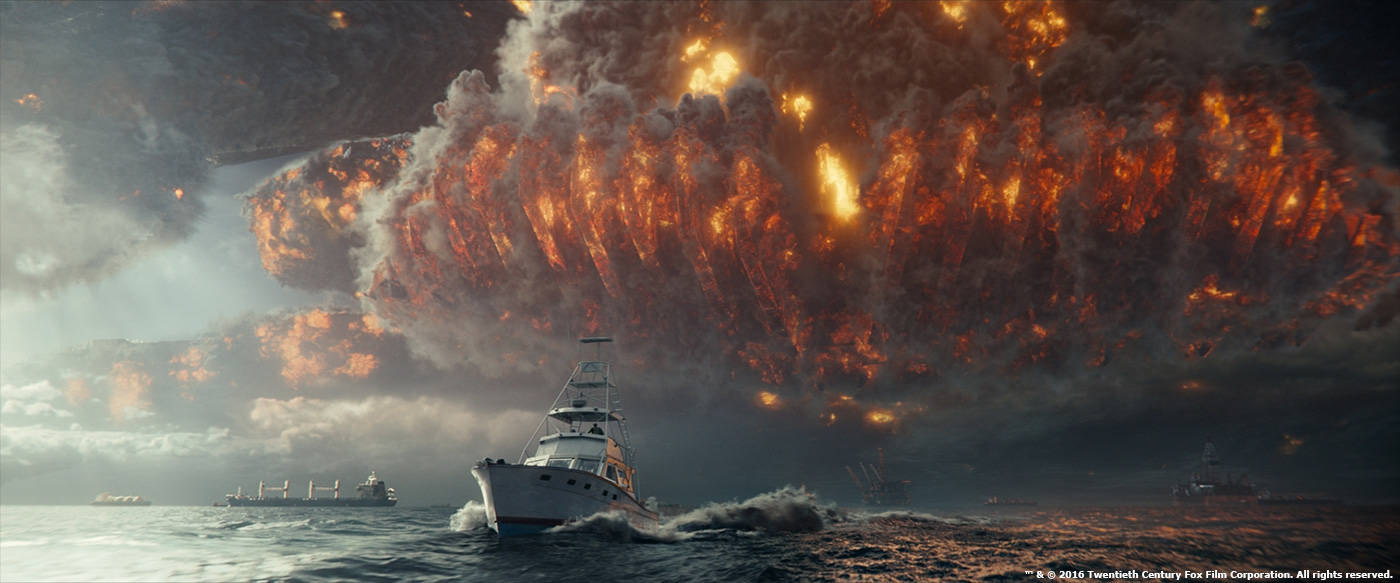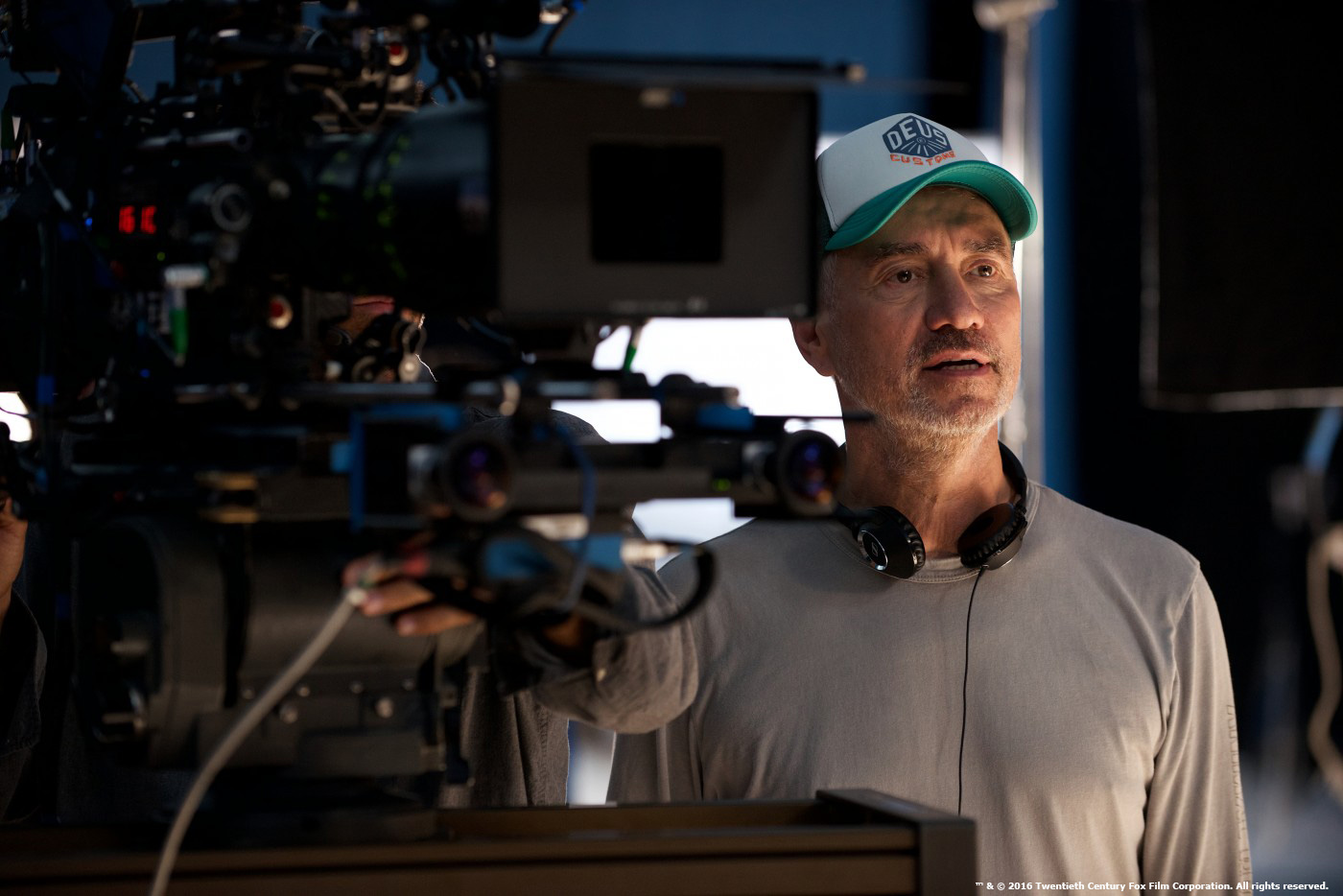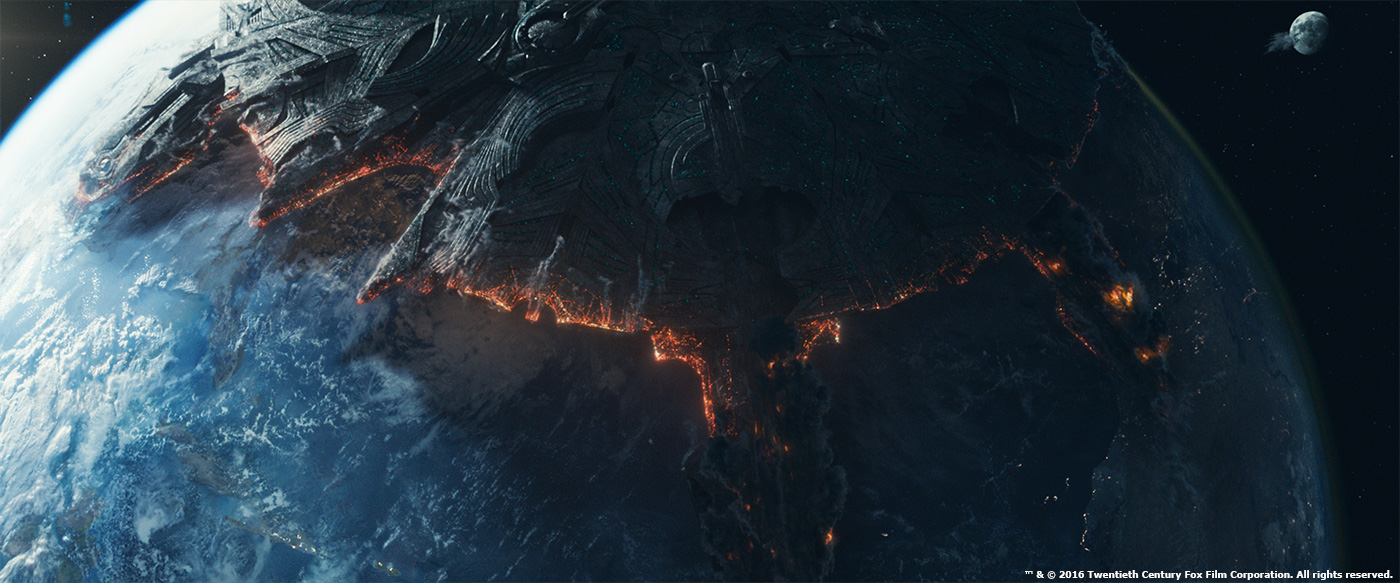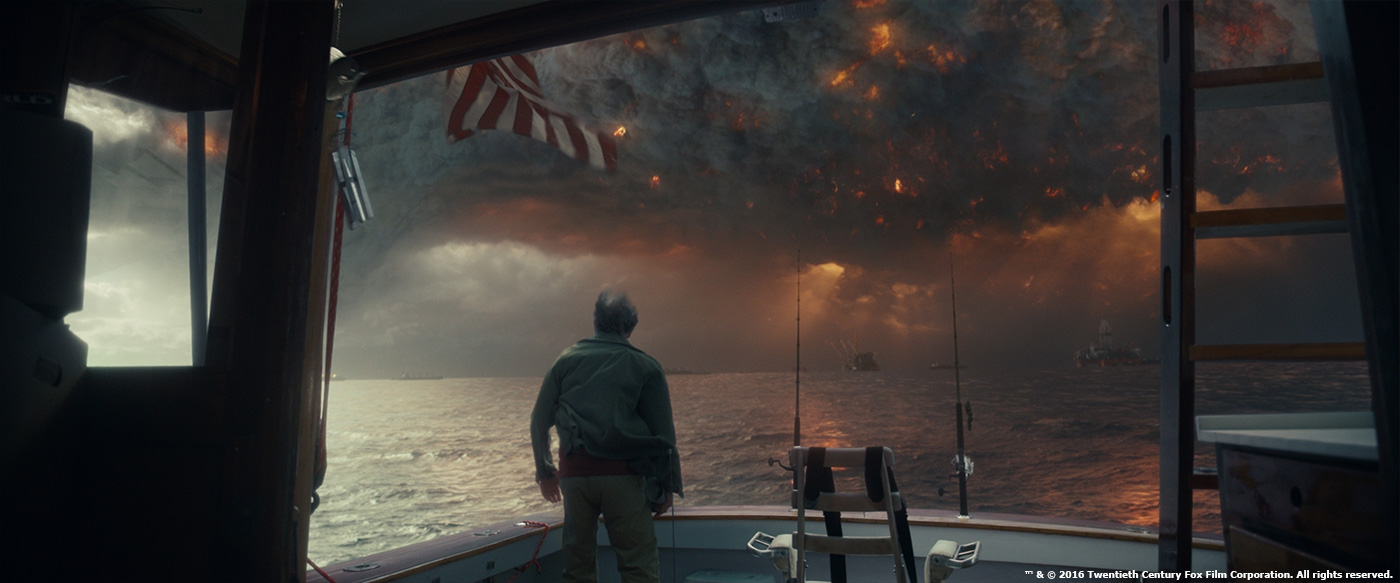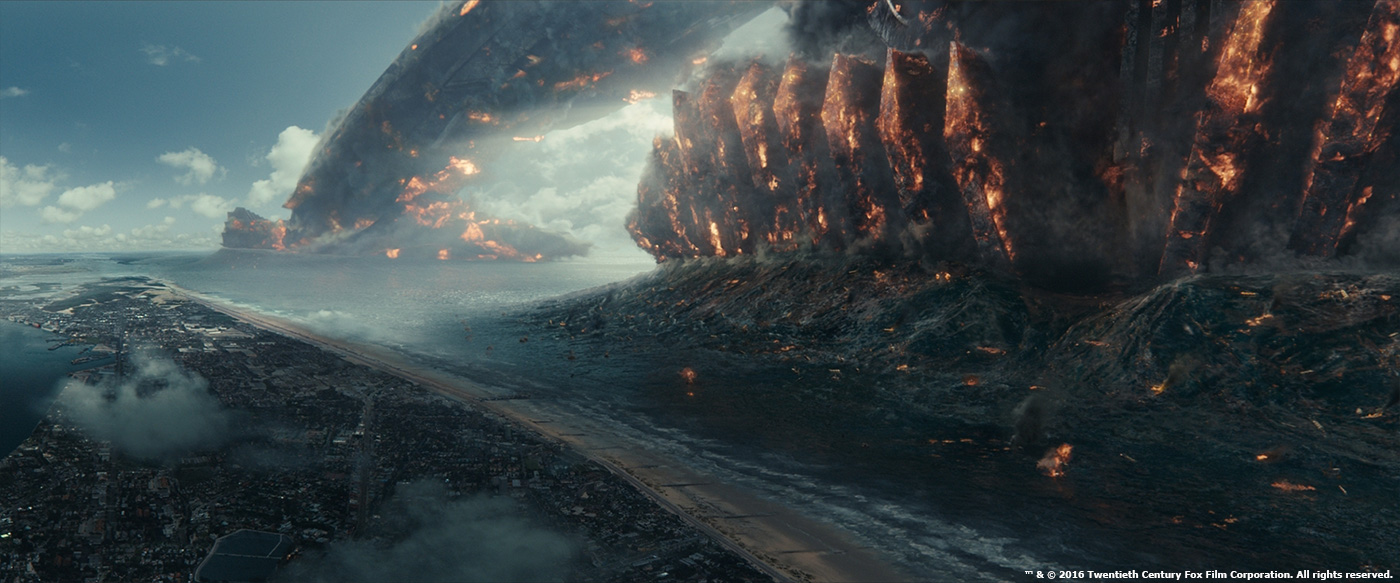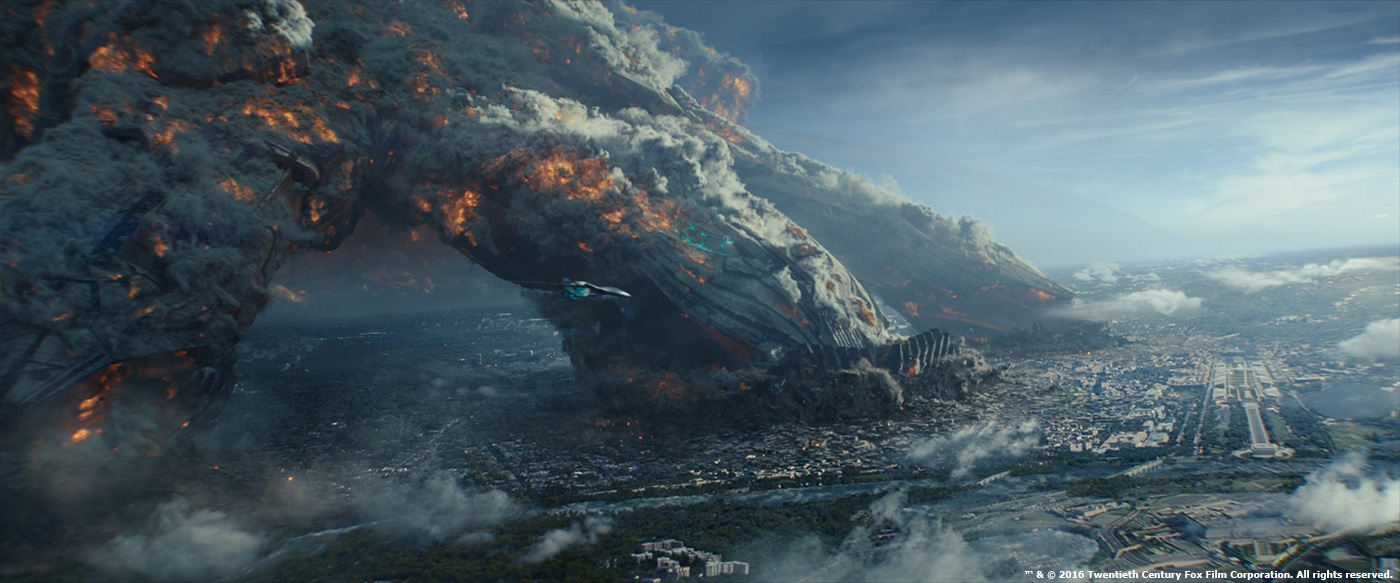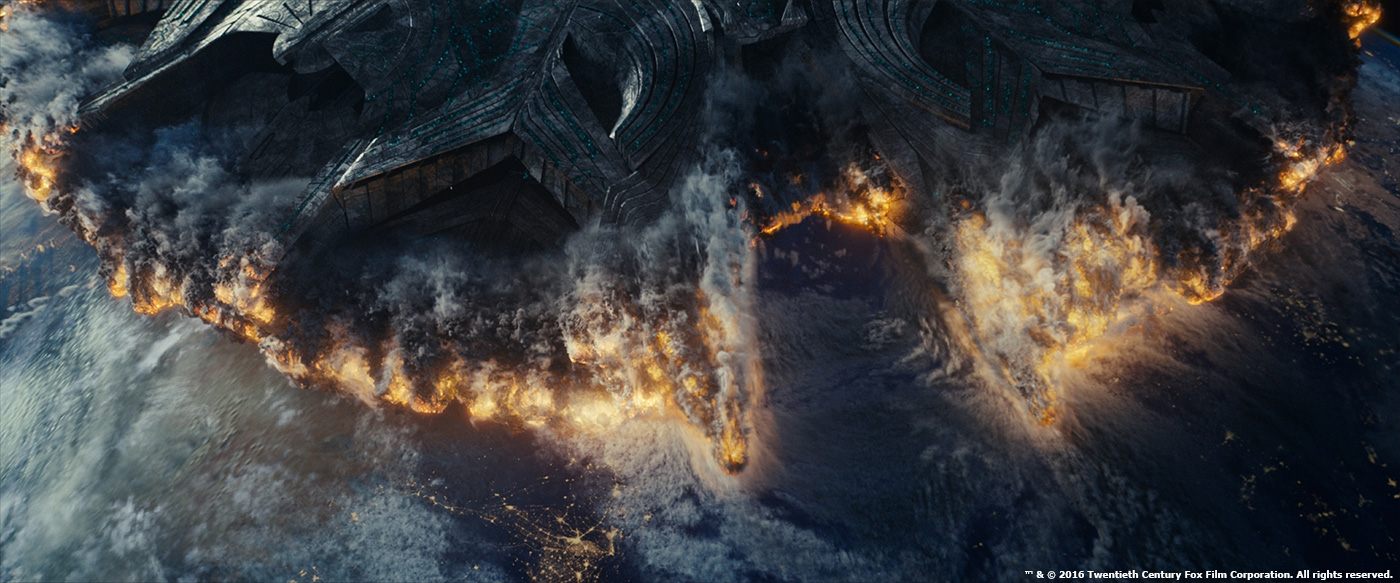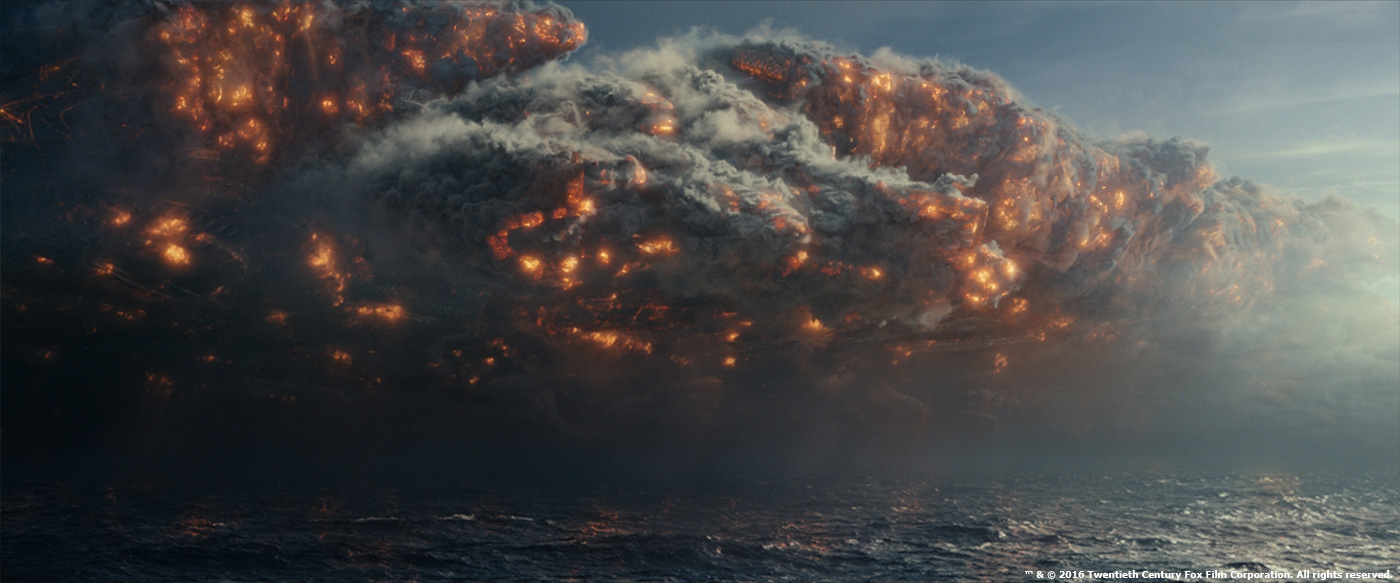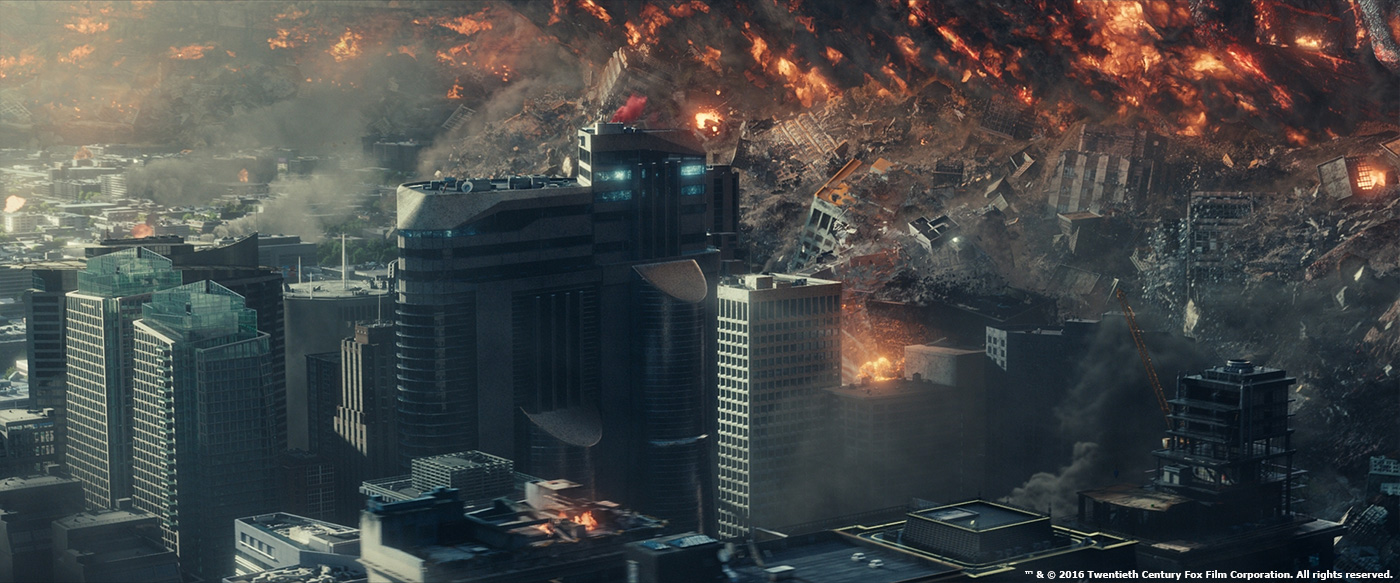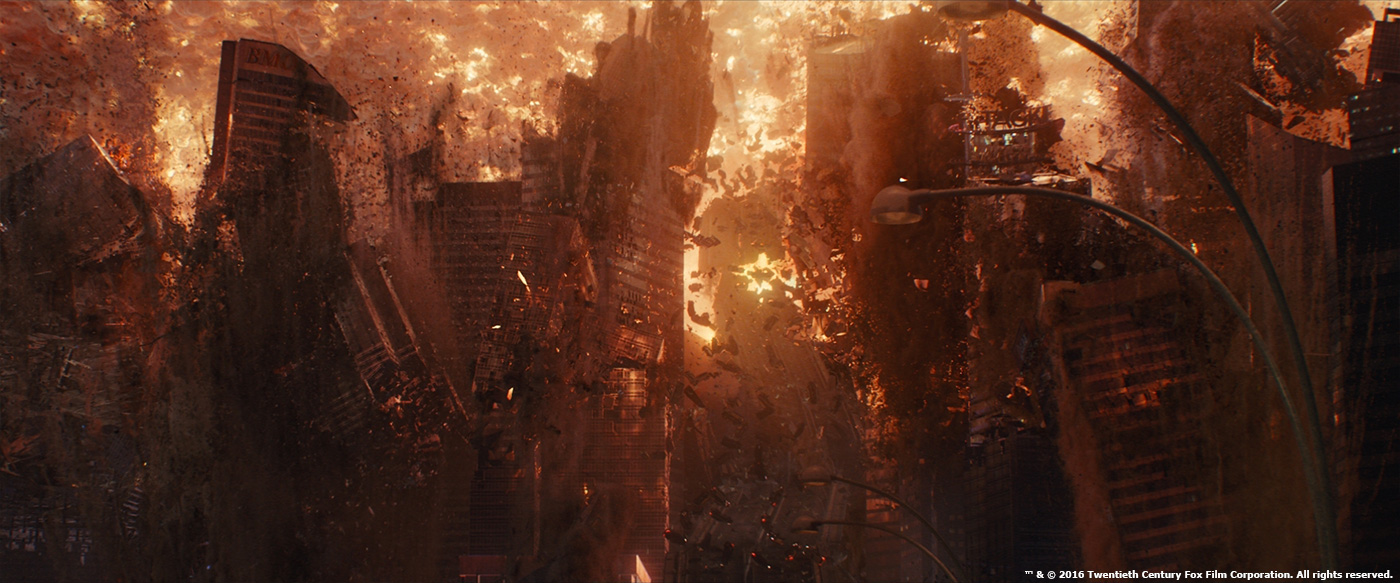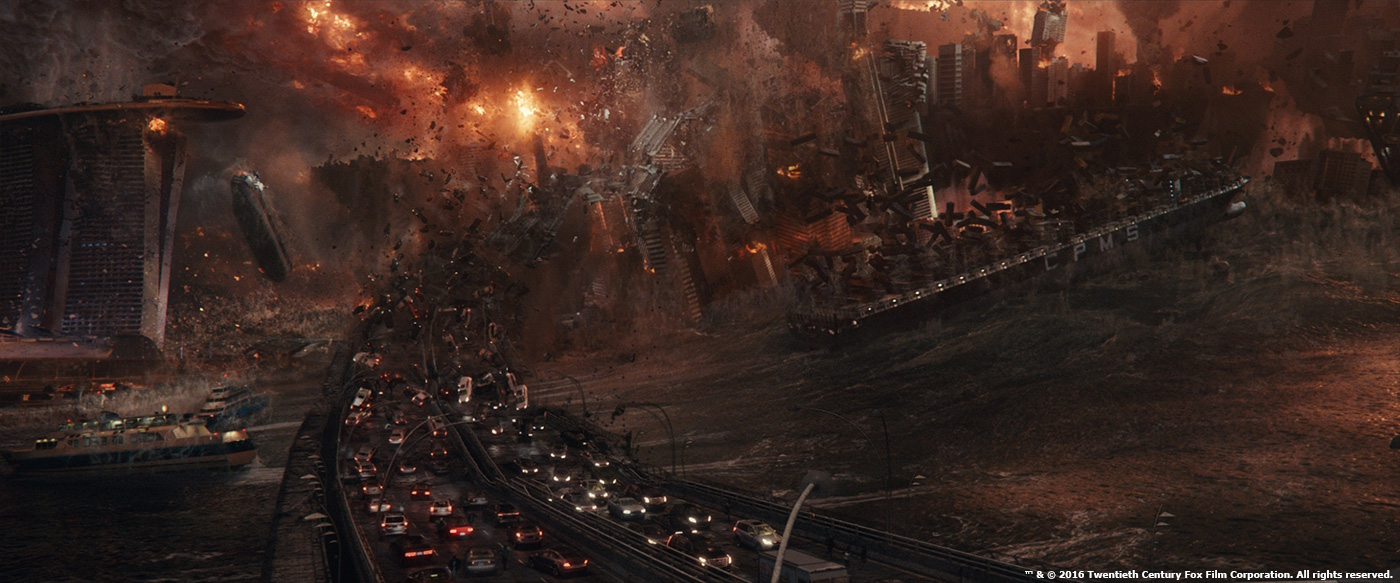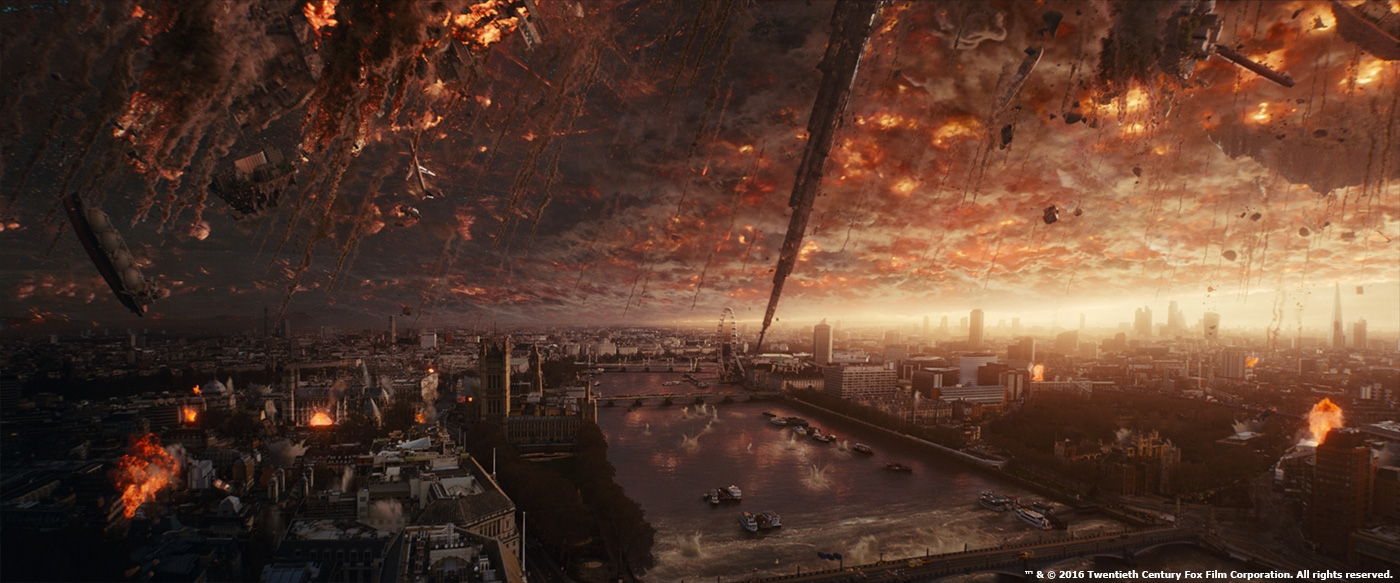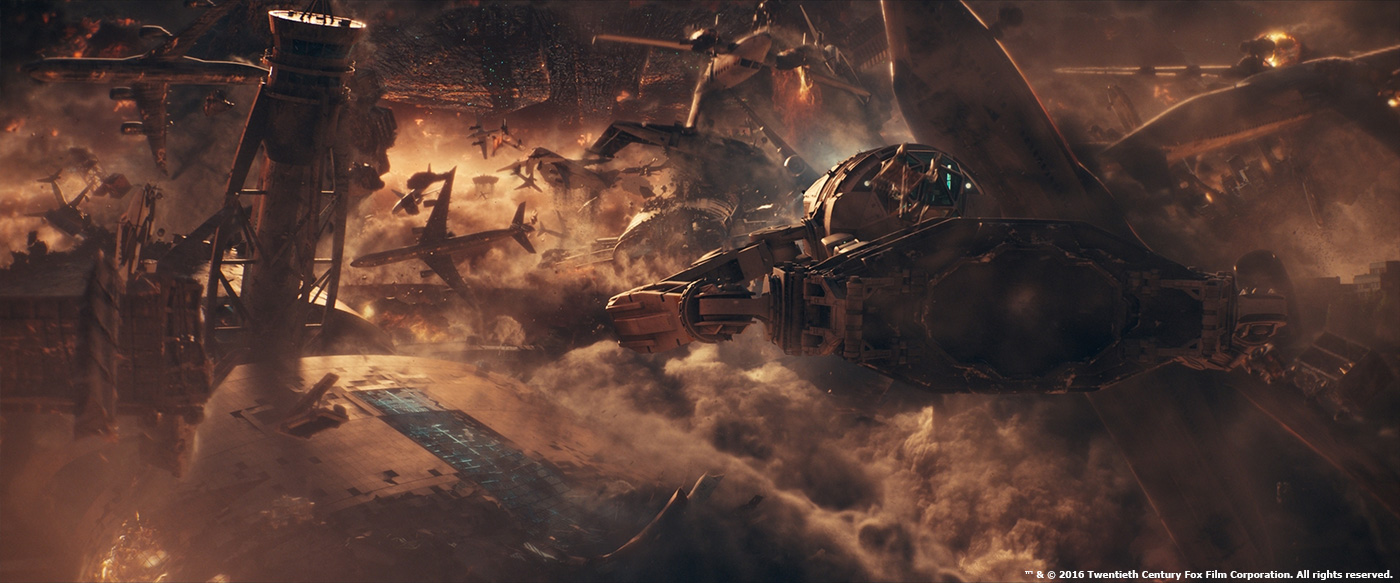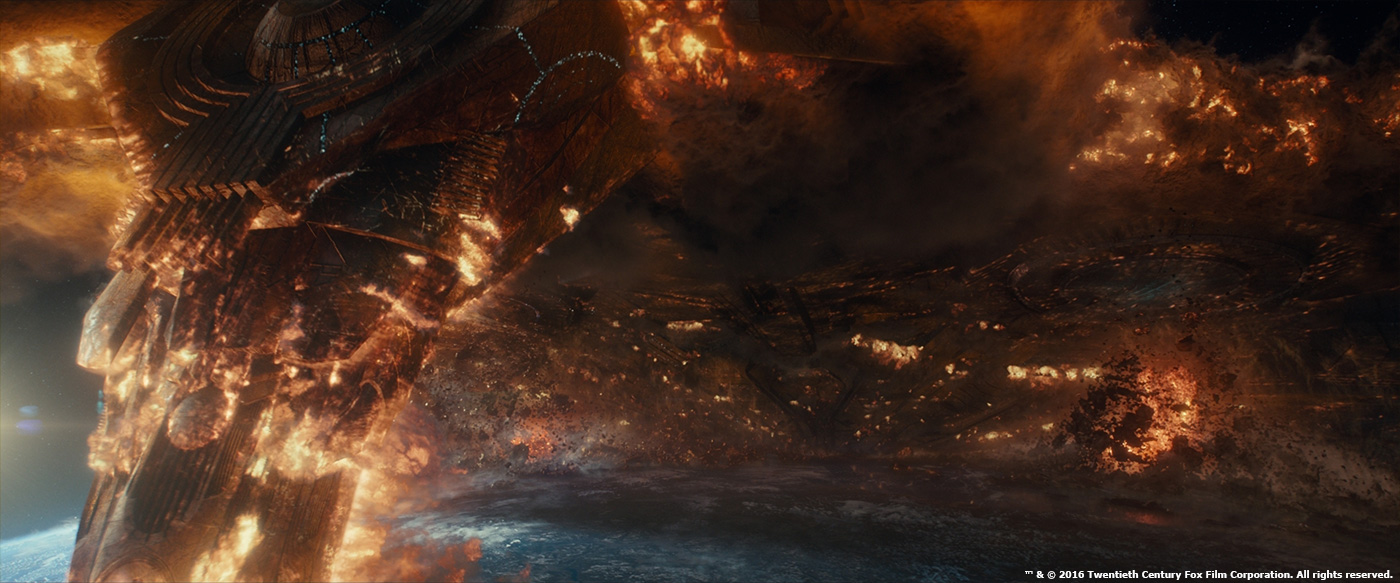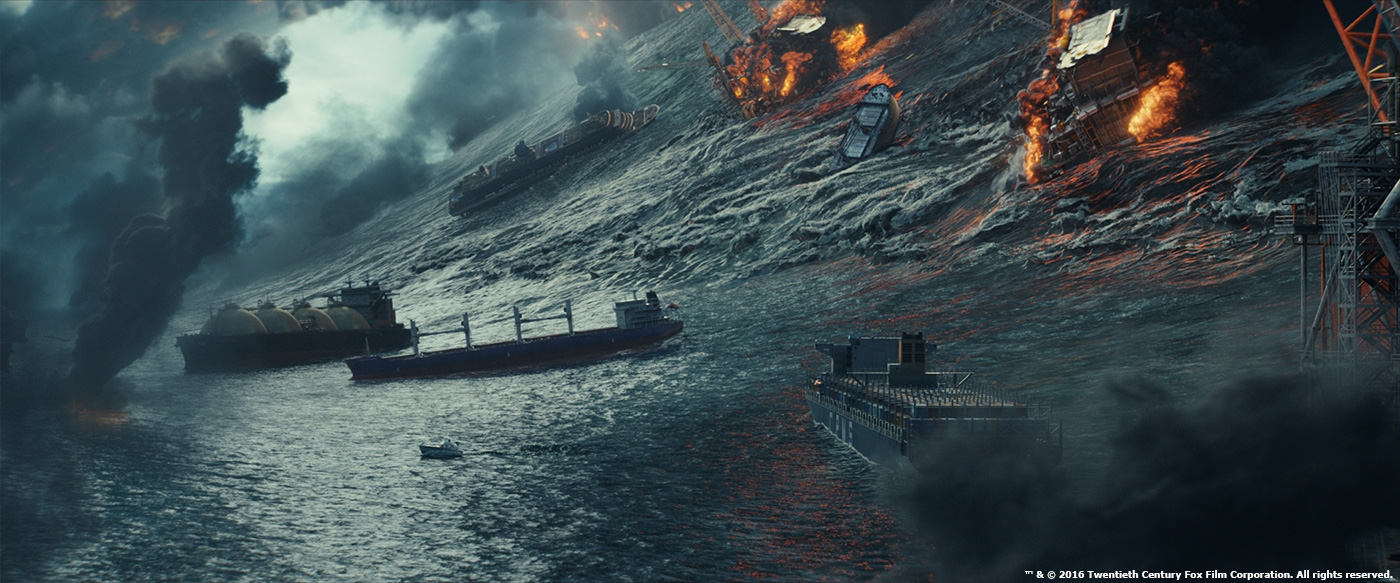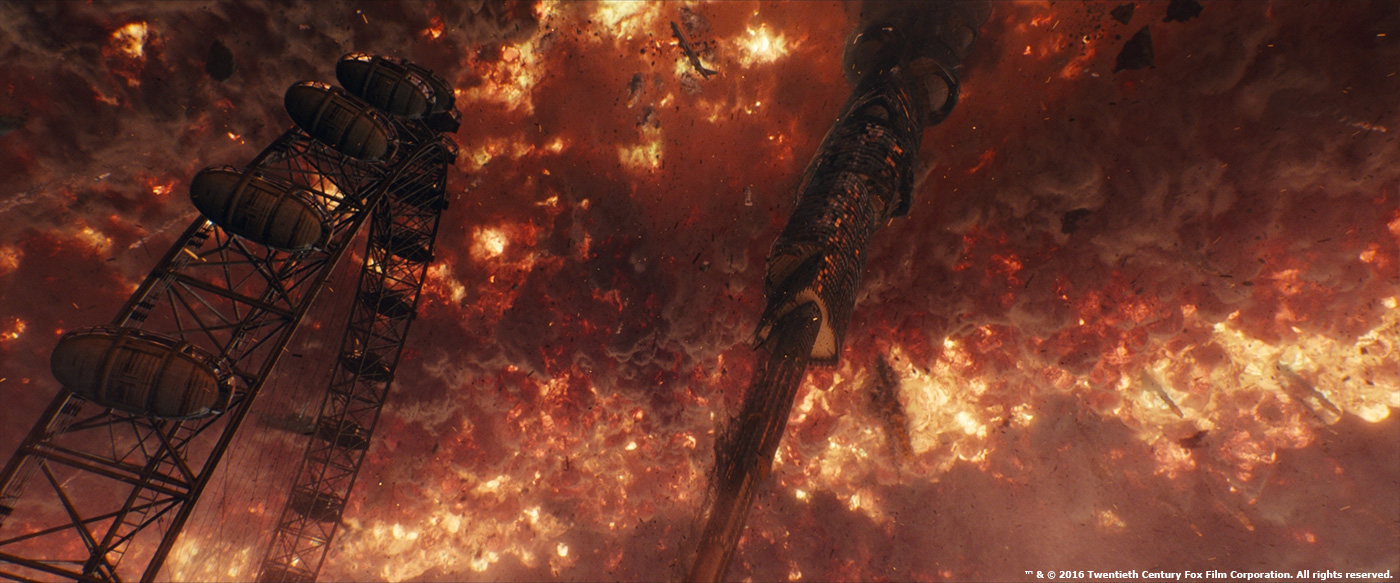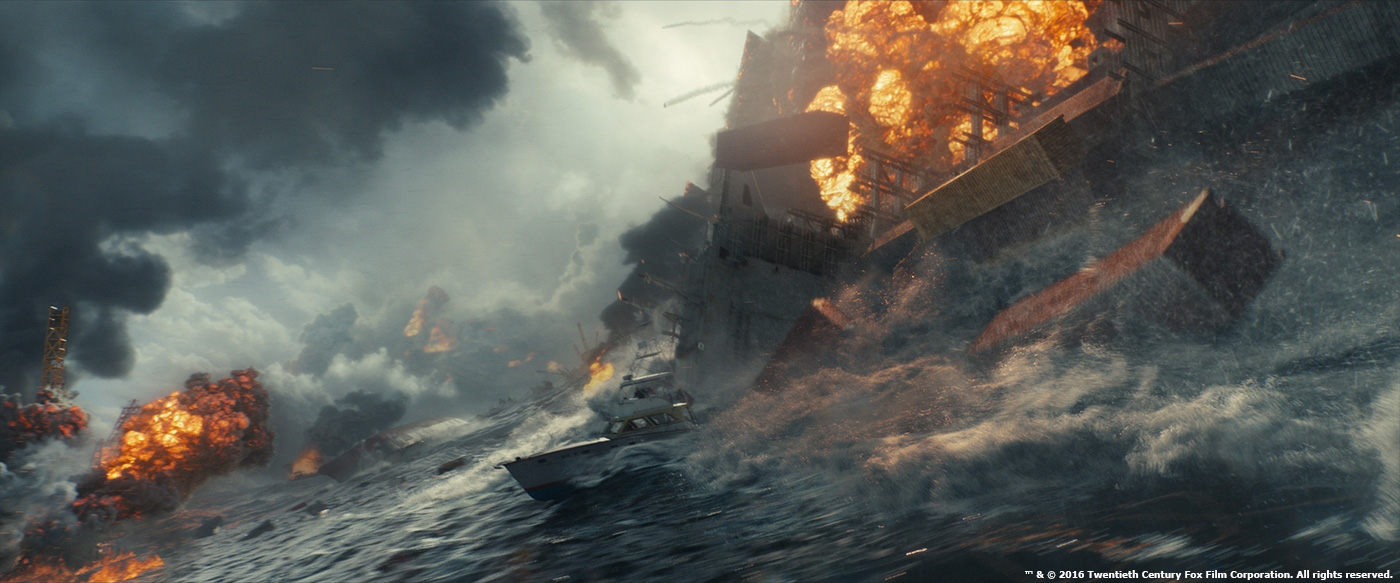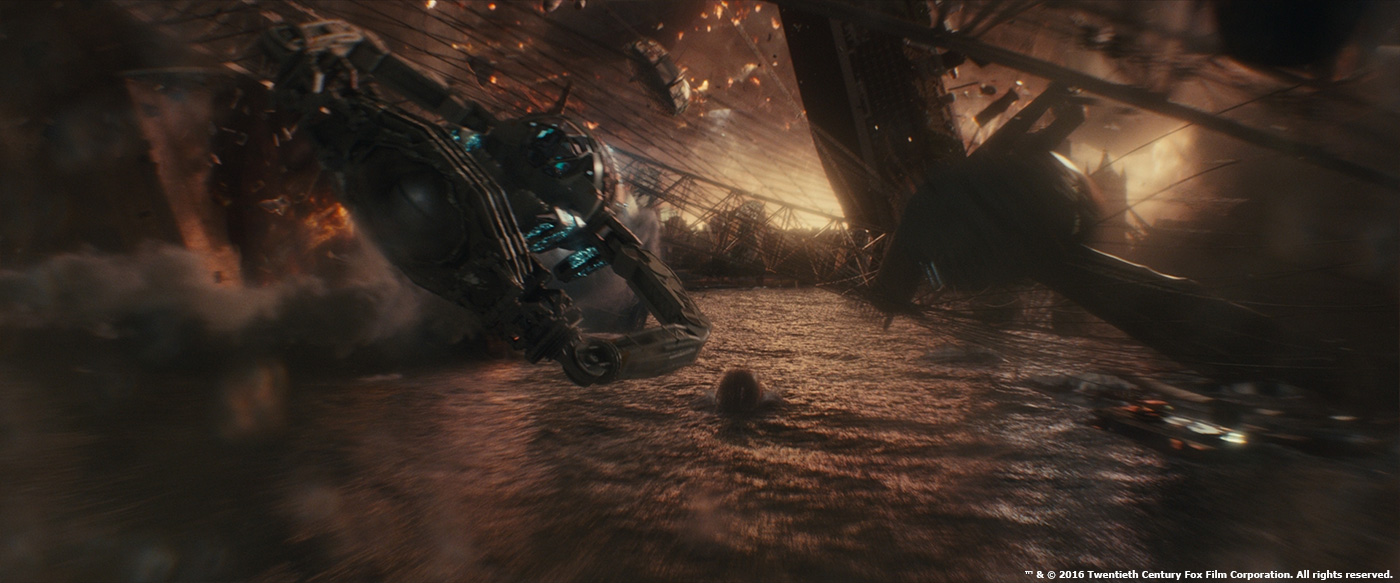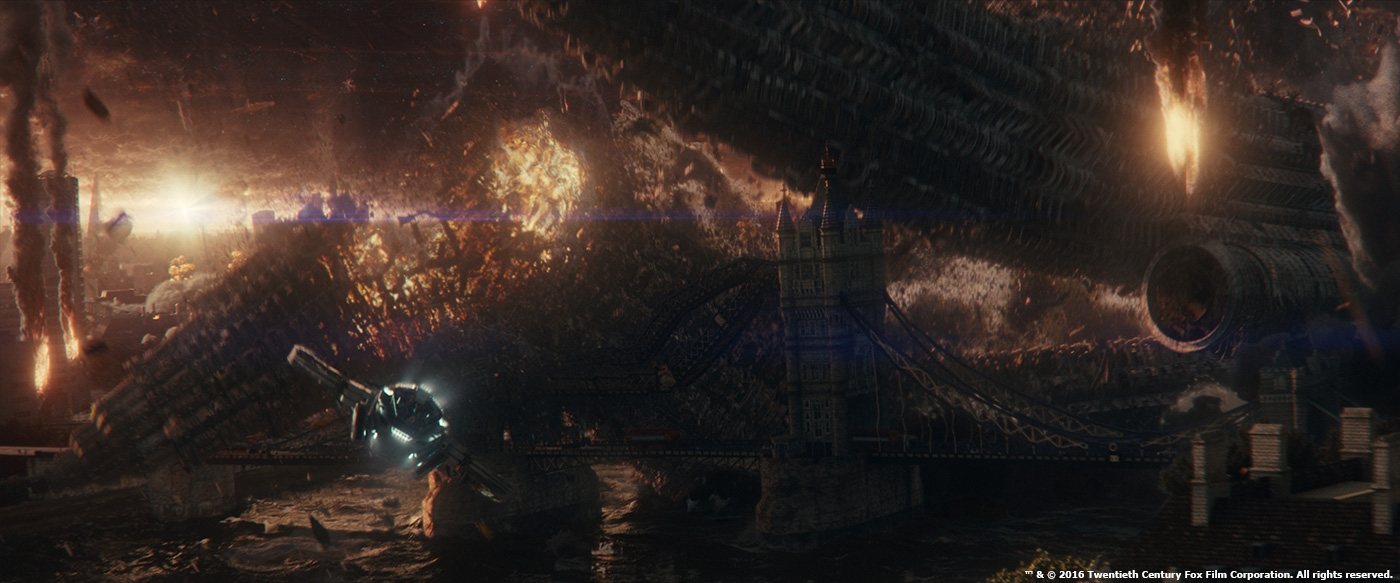In 2014, Bryan Grill had told us in detail about the work of Scanline VFX on CAPTAIN AMERICA – THE WINTER SOLDIER. He then worked on SAN ANDREAS. Today he explains his work on INDEPENDENCE DAY RESURGENCE.
How was this new collaboration with director Roland Emmerich and Production VFX Supervisor Volker Engel?
This will be the 3rd time Scanline VFX has collaborated with Director Roland Emmerich and Production VFX Supervisor Volker Engel. The other projects were 2012 and WHITE HOUSE DOWN. And this would be my 3rd movie working with Roland, the first being THE DAY AFTER TOMORROW, followed by 2012, and the first time I have worked closely with Volker and his team at Uncharted Territory.
What were their approaches about the visual effects?
Roland’s and Volker’s approach was to increase the overall scale. Bigger ships, bigger fights and bigger aliens. Roland and Volker worked with art director Luis Guggenberger to come up with 17 key concept images that were used to get the greenlight for the making of the next instalment of INDEPENDENCE DAY.
What were the sequences made by Scanline VFX?
Scanline worked on the Africa sequence where the Jeff Goldblum character investigates the last remaining alien City Destroyer from the first invasion 20 years earlier. But the bulk of our shots were the major, worldwide destruction shots, as the Mothership enters Earth’s atmosphere, plants itself firmly on the Earth, and wreaks havoc. This includes the Under The Mothership and Singapore destruction sequences (what goes up), as well as London(must come down).
Also, the landing of the ship, when the Mothership « toes » land in both the Gulf of Mexico and Washington D.C.
Last but not least we had all the shots of the Mothership’s drill cutting into the earths crust but first creating a deep maelstrom in the Atlantic ocean.
Mohsen Mousavi serves also as VFX Supervisor. How did you organize the
work with him inside Scanline VFX?
This was my second collaboration with Mohsen Mousavi. The first movie was SAN ANDREAS where we he was VFX Supervisor for Vancouver as well. Mohsen’s main role with VFX Producer Robert Evans and the production team was organizing and running the day to day with Compositing Supervisors Mathew Giampa and Adrian Sutherland and Effects Supervisor Julius Lechner.
Mohsen was the pivotal force working with the team solving the more technical pipeline issues and pushing the technology needed to complete the work on the show. Mohsen assumed primary responsibility for asset creation, lighting, and effects. We both oversaw concepts, layout, animation, environments and I focused on Matte Paintings, roto/paint and composting. A great use of both our strengths made for a very rewarding experience.
How did you work with the art department for the creation of the Mothership?
We worked with Volker and his previs team which helped with the basic animation of the moving parts. We than had a chance to sit with designer Johannes Muecke and Roland which gave us a good foundation for how big the Mothership was and how it would move stop and land on the earth. Once we had Johannes’ first pass at the large scale design language on the Mothership it was our job to incorporate the the texture and symbols from the City Destroyer in the first movie but at the proper scale so the continent sized Mothership still felt huge.
Can you explain in detail about its creation?
The Mothership and its creation was a very big and daunting task. The Mothership is roughly 4500 kms in diameter and its legs when fully stretched out are another 2000 km long. So imagine the ship covering the Atlantic Ocean from the eastern states of the USA too the NW part of Europe. And the legs of the ship expand as far as the Gulf of Mexico to Morocco.
So as explained before we started with a previs model from Uncharted Territory. From there we got an updated model which had the beginnings of some of the symmetrical shapes on the ship. Since the ship and its design language was symmetrical in nature we decided to cut the Mothership into pie sections. From these sections we started doing some concept work before we started with any detailed modeling. We had already played around with some procedural textures that could be used as a base layer and started the matte paintings with that. From there our Matte painting supervisor Yvonne Muinde and her team started grabbing from the photographic reference given to us by Volker from the original INDEPENDENCE DAY models. Once we had gone back and forth with Roland and Volker a few times defining the design language, we started to extrapolate that to the rest of the ship and start modeling in detail. From that point on we would update the Mothership’s detail to work within the shot cameras in our sequences. This led to more modeling or painting more detail and re-projecting it back on the render.
What was your feeling to recreated the iconic tank cloud effect?
The cloud tank effect of the alien ships in the first INDEPENDENCE DAY was so amazing the first time I saw the movie. We knew it would be a challenge recreating this effect but were ready to take it on.
Mohsen and I worked with FX lead Ryo Sakaguchi early in the process to try and figure out how we could achieve the detail and look of the first movie. We did a few tests on a smaller portion of the Mothership trying to match the look as close as possible. We than had a meeting with Roland who basically had 6 shots of the Mothership entering the earths atmosphere that he wanted us too work out how that iconic effect would actually look on such a big ship. Ryo then worked with Scanline President and Sr. VFX Supervisor Stephan Trojansky, taking 2 weeks of extensive look development to figure out how to make this effect work.
After 2 weeks we were happy with all the hard work and ready to show Roland. Roland and Volker liked the iterations we presented which gave us confidence in reproducing this effect for the movie.
Can you explain in details about the creation of this beautiful effect?
Our goal was to use the first film’s iconic cloud tank effect as inspirational reference but utilize the latest simulation technology to modernize the effect. Since the mothership on this film was several thousand miles wide, much larger then the ships in the first film, we needed to capture the massive scale while maintaining the feel of the first film.
The challenge was running high resolution simulation in order to produce the detail necessary for the effect while interacting with everything that is happening in the scene. On top interacting with the Mothership itself and the environment, sims needed to interact with a screen full of city pieces that were being sucked up by the Mothership. We decided early on to simulate the effect as one giant simulation since the classic approach of simulating cloud libraries and synthesizing the caches in 3d lacked the realism and the integration we were after.
The simulation was massive, which took up to 10TB of data per sim. By distributing the simulation up to 16 render nodes using Flowline, our in-house fluid simulator, sim times were manageable. Our bigger sims on this project took around 2 minutes a frame with 1 billion+ voxels per sim.
How did you create the massive city environments for Singapore, London and Washington D.C.?
To create the environments for Singapore, London and Washington D.C. all had different ways in which we executed to be able to build the cities.Singapore was one of the first sequences turned over to us so we knew what the shots were we had to recreate. We did extensive technical visualization and research first establishing where our cameras needed to be to get the framing and composition Roland wanted.
VFX Producer Robert Evans contacted a local company in Singapore who would be able to take all the photographic reference we would need to do the job. With a few back and fourths we were able to get the data needed to create the city. From there we would start to model only the hero buildings we needed for the shots. Since all the building in Singapore are being destroyed that meant a lot of specific modeling for destruction. Washington D.C. and London were sequences that were not turned over until much later in the schedule so we had to approach those environments differently.We had an idea of the shots for those sequences but nothing was formalized. We determined that Washington would be mostly Matte Painting incorporated with destruction. We did not have a large library of photography for Washington so it made sense for a new approach of building cities in 3D very quick and easy.
Mohsen worked with artist Mattias Buehler building what we call our Procedural City Generator, an interface that would work in the Scanline pipeline that allowed the creation of buildings that were similar to those you would find in Washington D.C. Ultimately it was a combination of building specific models,city generator,matte painting and renders of the futuristic Washington D.C. we received from another vendor, Luxx, who handled all the other sequences dealing with Washington D.C. Pre-destruction. Once we got the London sequence turned over we had already planned that it would be easier to have actual aerial plates and photography in order to complete the sequence in time.
Mohsen and the layout team plotted out the flight paths and heights for the aerial and ground photography needed. Robert Evans again did research and found a local team in London that would handle the shooting. This was much more cost effective way of working. The local team could change shooting days as needed based on weather and availability of resources. So in combination of the aerial plates we also modeled and destroyed Parliament,The London Eye and all the surrounding areas.
The Mothership is causing major trouble to gravity. How did you approach this effect?
In INDEPENDENCE DAY: RESURGENCE the alien Mothership enters the earth’s atmosphere and causes anti gravity effect that literally sucks of Asia and the Middle East like a vacuum cleaner. The idea behind this effect described to us by Roland and Volker is that the Mothership is heading straight towards earth and in order to land the continent sized ship it uses its gravity engines to slow the ship down.This slowing and steering of the ship creates its own gravity sucking up the earth underneath it. Once the ship has slowed down and is ready to land the gravity engines are turned off which than has everything that had been sucked up fall back to the earth. As Jeff Goldblum’s character David says in the movie, « What goes up must come down ».
Given that it’s a Roland Emmerich movie, massive destructions are then happening. Can you explain step by step about the creation of this kind of shots?
A crucial aspect when working on these massive shots was very careful planning and designing the aspects and beats of the shots early on with the layout department or as a basic FX blocking. Taking the destruction of Singapore as an example, we started off by animating the different large areas of the city and having a simple representation of the timing of the bridge tearing. Once we locked the overall layout of the shot down, we continued with creating very simple simulations that defined when and how the individual buildings would break. Step by step we replaced those with more and more complex rigid body simulations, using the blocking as a reference. This process was very important since there were multiple people working on those destructions and we had to avoid ending up with chaos that would not be readable anymore to the viewer.
How did you manage the render times challenge with these huge FX shots?
We usually had to face two challenges: Enormous amounts of geometry as well as giant fluid simulations like water, fire, smoke, clouds and dust. Although our pipeline did already support a few different ways of handling a large amount of assets with instancing, we had to step it up a notch to be able to render those thousands of airplanes, cars, wrecked buildings and even complete hi-res city blocks, flying through layers of fire or tumbling over each other in a giant pile.
For fluid simulations, using our in-house software Flowline, that ties in very well with Vray, which enabled us to come up with new render optimizations, especially for large atmospherics. With those developments we managed to keep render times under control very well.
The Mothership causes also trouble on water. Can you tell us more about the tidal wave shots?
The tidal wave shots that happen in the movie is when one of the legs of the Mothership is setting down in the Gulf of Mexico. Judd Hirsch’s character Julius happens to be out in the gulf fishing when the landing starts to happen. We begin with cloud effect from the first movie and one of the three toes of the landing gear emerges from the cloud and hits the water creating a 700 ft tidal wave heading towards Galveston, Texas. As Julius tries to out run the towering wave in his fishing boat we see many oil platforms and ships starting to explode and capsize. There is complete mayhem as we watch Julius navigate his way to safety, we hope.
What was the main challenge on this show and how did you achieve it?
The Main challenge of this show was the scale. Scale of the Mothership, scale of the effects and simulations. On a Roland Emmerich show bigger is better.
What do you keep from this experience?
Working on INDEPENDENCE DAY: RESURGENCE was a great experience for us at Scanline VFX.
The really hard water and destruction shots for the movie were right in Scanline’s wheelhouse and were a great fit for our artists and pipeline.
Roland was very specific in the composition and desired effect he wanted the audience to have on every shot. He told us he wanted the audience to see each shot and know exactly what was happening because the visuals were part of the storytelling. Roland likes his visual effects to be mostly backlit which gives a nice silhouetted graphic image.
Was there a shot or sequence that prevented you from sleep?
There was really no shot or sequence that prevented me from sleep. I really enjoyed working with both the production team and the team at Scanline VFX which made the experience that much better.
How many shots have you done?
I think the total amount of shots we finaled on IDR was around 300.
How long have you worked on this film and what was the size of your team?
It was about a full year that we had worked on the film with a fluctuating team for a total around 200 people.
What is your next project?
The next project after IDR will be working with a long time friend VFX Supervisor Sean Faden on the Lionsgate film POWER RANGERS directed by Dean Israelite.
A big thanks for your time.
// WANT TO KNOW MORE?
– Scanline VFX: Official website of Scanline VFX.
© Vincent Frei – The Art of VFX – 2016


